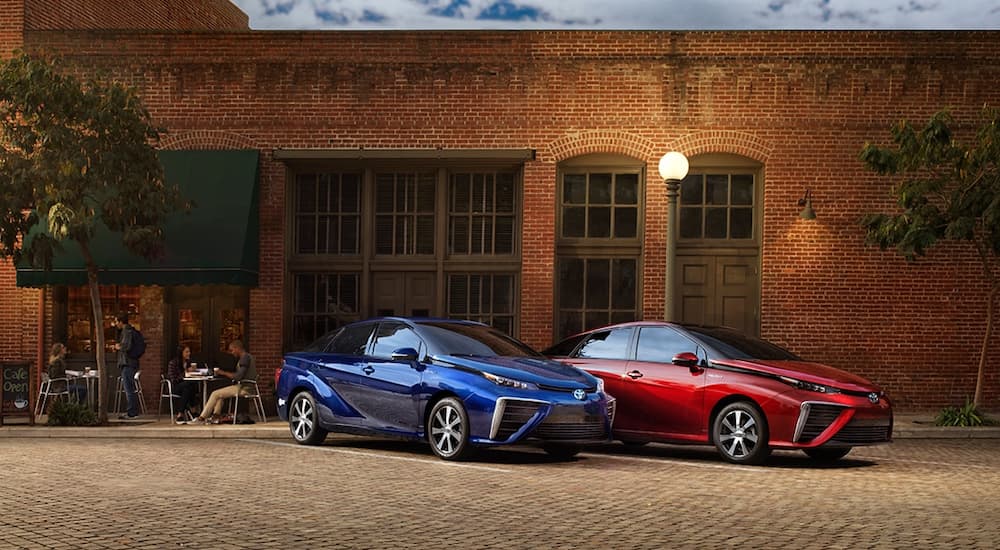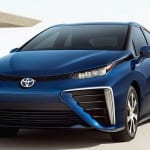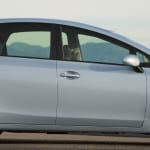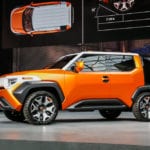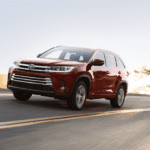As we approach the end of 2019’s first quarter, we’re seeing an endless onslaught of headlines related to automakers’ restructuring of their lineups around a more timely selection of models. Of course, this means the elimination of slow-moving sedan styles in favor of more popular crossover SUVs, a tech-centric focus on autonomous vehicles and the ever growing number of alternative fuel vehicles. Whether hybrid variants of enduring favorites or new EV offerings, there are few lineups or vehicles-styles in 2019 unaffected in either the short or long term by these changes. And the latest to make headlines in this regard is Toyota.
But unlike so many automakers content to fix their gaze upon plug-in electrification, Toyota seems to be taking the road less traveled, focusing on hydrogen fuel-cell offerings.
Currently, that focus surrounds the Toyota Mirai, a zero-emission vehicle (well, outside of water) with an estimated driving range of 312 miles. And it’s worth pointing out that the word “Mirai” translates to “future” serving to reinforce Toyota’s opinion of where the automotive marketplace is heading in the days to come. But, with only 11,000 hydrogen vehicles on the road worldwide, and as few as ten of the “Mirai” made each day, Toyota has little choice but to recognize that there are reasons behind the modest interest registered among consumers. First, is the less-developed infrastructure of refueling locations available for Fuel Cell vehicles; after all, what good is the convenience of a five-minute refueling if you can’t find a refueling station? Second, is the less-than-competitive price point placing the Mirai up around the $50,000 mark (even after $20,000 in government subsidies). That’s slightly above the spend of most prospective car buyers.
But those limitations aren’t stopping Toyota from sweetening the deal with some incentive programs. Consider the economy of receiving 3 Years (or $15,000) worth of free fuel. This alone would help to offset some of that additional price tag. Based on the average American’s consumption of about $1400 in fuel each year, there’s some clear opportunity for Mirai owners to get their money’s worth – while recapturing some of the joy of driving.
The long game, of course, is to create incentives compelling enough to drive up interest in the Mirai, allowing for increased production, discovery of efficiencies and reduction of its price point in order to drive up more interest. But what seems to be missing in this strategy is any consideration of the relative ignorance of most consumers in regard to hydrogen-fueled technology. Having the proper infrastructure and assurances in place is one thing; nurturing an informed and confident consumer base is another thing entirely, and that’s where Fuel Cell innovators are dropping the ball, in our opinion.
The working principle of fuel cell technologies goes something like this: hydrogen gas is channeled from high-pressure tanks into oxygenated fuel cells. As the hydrogen and oxygen mix, it creates an electric current which powers the electric motors, powering the vehicle. The only bi-products of the conversation are heat and water, minimizing the kind of harmful carbon emissions that come from combustion engines. Seems simple enough, right?
In fact, when you simplify the process as we’ve just done, it becomes easy to see the global impact we might enjoy in a future where transportation is powered by hydrogen fuel cells. That said, it is important to recognize that there’s still a link between hydrogen and natural gas, in fact it still serves as our primary source of hydrogen. There are however, processes and programs in place to yield hydrogen from cleaner renewable sources. California (as one might expect) is taking steps in this direction, requiring hydrogen stations to obtain a minimum of 33% of their fuel from renewable sources. These sort of incentives might prove to be the saving grace in building a stronger infrastructure and making fuel cell vehicles more appealing.
And over in Japan, such regulations and the need for clean energy sources are a cornerstone of Toyota’s strategy. Recognizing that exhaust regulations are only going to get more strict with time, Toyota aims to remain ahead of the curve. This means the pursuit of an ability to make hydrogen cells in bulk, reducing the expense while increasing the ease of compliance.
In fact, Japan aspires to become the first “hydrogen society” expanding the use of hydrogen beyond the automotive industry, and using it as the primary source of power generation for their entire society. Ambitious plans being made by the energy ministry include (but are not limited to) 100 fuel cell buses being deployed to aide with transportation during the 2020 Tokyo Olympics and 200,000 fuel cell vehicles on Japanese roads within the next six years. Combine that with Hyundai’s intention of adding 700,000 fuel cell vehicles by 2030 and its easy to see why Toyota (among other automakers) is choosing to place their proverbial eggs in the hydrogen basket.
So, that said, we should all expect to see a growing presence of the hydrogen fuel infrastructure in the years to come. How this will affect or influence other automakers remains to be seen. Will hydrogen prevail, asserting itself as the means of powering vehicles over traditional EV, or is it more likely that we see a shared market, or even a merger of technology.
All we can really do is wait and see. But if, in the year to come, you come across one lonely guy refueling his car at the hydrogen station, go easy on him.
You might be in 2020, but that guy?
He’s already living in 2030.
